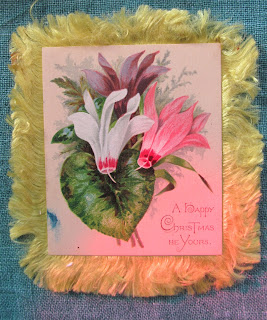It snowed here in Maine Maine
It was, as we say in Maine
And a perfect opportunity to spend a day at home.
 I spent part of my time going through yet another box of family ephemera, and found this masterpiece tucked inside one of my old report cards. I drew it for my parents (or so it says on the backside) in 1956, when I was in the fourth grade; it was originally folded just above the roofline to make a stand-up Christmas card. I was a careful planner in those days – you’ll notice that everything’s plotted and outlined in pencil, then colored with, in all probability, Crayolas.
I spent part of my time going through yet another box of family ephemera, and found this masterpiece tucked inside one of my old report cards. I drew it for my parents (or so it says on the backside) in 1956, when I was in the fourth grade; it was originally folded just above the roofline to make a stand-up Christmas card. I was a careful planner in those days – you’ll notice that everything’s plotted and outlined in pencil, then colored with, in all probability, Crayolas.
There’s something about the trees that makes me smile – those small, triangular fir trees plopped willy-nilly over the hillside; the thick-trunked deciduous trees (elms?) on either side of the path that leads up to the house – the red clapboard house with a green door (those are Christmas colors, for certain) and a warm yellow glow in all the windows.
I was ten years old.
When I found this drawing, I began to think about other places I have lived; began to think of my history in terms of houses.
My parents had a late 19th-century, dark gray house that overlooked Portland
The first house I ever owned was an 1820 cape near the Kennebec River in the town of Richmond Eastern River valley section of Kennebec County
Now I’m here, in this house, back in the Midcoast area.
So Thursday, during the snowstorm, I looked at this drawing of my “first” house in snow for a long time, then bundled up in my parka and boots and hat and mittens and went outside, lumbered through the drifts in my driveway to the street to take a photograph of my “last” house in the snow...
First and last: Happy New Year to you all!

















